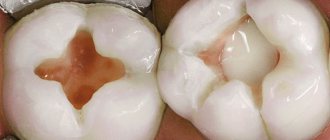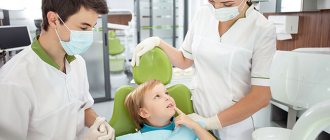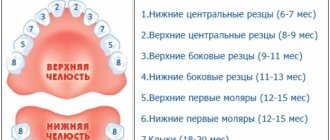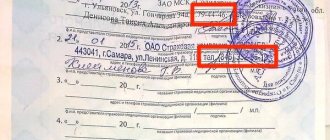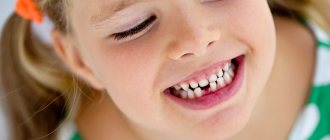Endoscopic interventions are minimally invasive, highly informative and effective medical services aimed at diagnosis and treatment (endoscopic manipulation, including endoscopic surgery) of various diseases. Today it is impossible to imagine modern oncology, gastroenterology, therapy, urology, pediatrics, traumatology without modern endoscopy. In the article we will pay attention to compliance with sanitary and epidemiological requirements for endoscopy rooms.
General sanitary and epidemiological requirements for organizations engaged in medical activities are contained in SanPiN 2.1.3.2630-10[1]. This document, in particular, provides requirements for placement, design, equipment, maintenance, anti-epidemic regime, preventive and anti-epidemic measures, working conditions for personnel, catering for patients and personnel of organizations carrying out medical activities. Special sanitary and epidemiological requirements for endoscopic interventions are given in SanPiN 3.1.3263-15[2]. Let us remind you what requirements are established by this document.
General requirements for medical organizations
The basis for the development of SanPiN in dentistry is Law No. 52-FZ of 1999 “On the Sanitary and Epidemiological Welfare of the Population.” The rules given in the normative act apply to all forms of legal entities if they carry out measures to provide dental services.
SanPiN dental office
The rules are mandatory for compliance throughout the Russian Federation. SanPiN dentistry establishes the following requirements for dental organizations:
- correct design and placement of equipment;
- proper working conditions for the organization's employees;
- established sanitary and epidemiological regime.
Authorized bodies carry out sanitary and epidemiological supervision. Each dental company is required to have a copy of the Rules. Responsibility for compliance with the standards lies with legal entities, individual entrepreneurs, enterprise managers and responsible persons.
What else is needed at the stage of opening a dental clinic?
At the initial stage of opening a dentistry, it is important to automate the work of the institution. Modern programs allow you to automate the following work:
- controlling income and expenses;
- making an appointment with dentists;
- maintaining doctors' schedules;
- drawing up patient treatment plans;
- tracking business success from the first days;
- control the consumption of materials;
- tracking the effectiveness of special offers;
- analysis of patients' dental formula;
- calculation of salaries to employees.
Special software is designed to solve different problems. Registration, medical records, payroll, and warehouse records are maintained automatically. As a result, the consumption of materials is reduced, and the director of the dental clinic makes management decisions faster.
The program helps attract and retain customers and improve financial performance. Automatic filling of doctors' schedules saves time, and employee accounting makes it easy to manage the staff of a dental clinic. Modern software eliminates errors in business processes.
SES requirements for dental offices
A small office can be placed in almost any area. Requirements for a dental office 2021 SanPiN allow it to be located in the following places:
- on the first or second floor of a residential building;
- in a separate building;
- in an attached room or outbuilding.
Safety precautions in the pool: rules and SanPin
If a room from the residential stock was chosen as an office, you will need to move it to a non-residential one. This is a rather long procedure that requires approval from many government agencies. In addition, if the office is located in a residential building, it will be necessary to make a separate exit for it so that it is convenient for visitors.
Sanitary and hygienic requirements for dental medical organizations also put forward some requirements for the premises themselves. The room should have:
- high ceilings - more than 2.6 m;
- network engineering;
- area from 14 square meters + additional 10 sq. m. for all additional work chairs or +7 sq. m. m. for each chair with a drill.
Note! If the office has no more than 3 chairs, it is allowed to make one sanitary unit for clients and clinic employees. If there are more chairs, a separate toilet will need to be made for clients.
Personnel requirements
Dental office employees must have:
- higher or secondary medical education;
- takes advanced training courses every 5 years;
- have a medical record.
The medical record must contain the dates of all examinations of personnel, as well as information about courses to improve the level of knowledge regarding sanitary standards.
On personnel hygiene
Medical staff should be provided with several sets of spare clothes. This:
- shoes;
- dressing gowns or special suits;
- hats;
- masks.
Changes of clothing should be stored separately in individual lockers. Outerwear must be kept in the wardrobe during working hours.
Sanitary clothing should be changed daily, regardless of the type of medical facility. Clothing stained with blood should be changed immediately.
During treatment procedures, the patient is prohibited from touching food, taking notes, picking up third-party objects, etc.
Hand treatment
All employees of the dental clinic, be it a doctor, consultant or orderly, must wash their hands thoroughly and ensure that the following requirements are met:
- It is forbidden to grow long nails or paint them with varnish;
- Do not wear jewelry on your fingers while working;
- Dental surgeons should refrain from wearing watches, bracelets or rings;
- After treatment, personnel should dry their hands with paper or cloth napkins.
To treat your hands, you can use soap and warm water or an antiseptic, which can help reduce the number of germs on the skin.
To the equipment
If an X-ray installation is required in a work room, when arranging it, you should be guided by SanPiN 2.6.1.1192-03.
Premises requirements
If natural light enters the room from one side, then the chairs should be placed along a light-carrying wall. The seats must be separated by opaque partitions at least one and a half meters high.
The room must have at least two sinks. One is for patients, the second is for processing equipment.
For disinfection
All dental instruments used for surgical purposes must be amenable to manual or mechanized disinfection. For this purpose, disinfectants with a wide range of applications are used.
Disinfection by wiping can be done for those items that do not come into contact with the patient or that cannot be disinfected by immersion. What a sterilization room in dentistry should look like, the requirements are specified in SanPiN.
Important! Disinfection occurs in separate sterilization rooms. If there are no centralized special rooms for the procedure, instruments are cleaned in departments of medical institutions.
Instruments for sterilization
After the procedure, the products should be dried until the moisture disappears. For this purpose, special drying cabinets are used. Processing of dental mirrors according to SanPiN follows the same procedure as for all other semi-critical items. They are subjected to high-level disinfection using chemical disinfectants.
Towards radiation safety
The location of X-rays in rooms must comply with radiation safety standards that define radiation protection criteria.
During procedures, the radiation doses received by patients and clinic staff must be recorded and recorded. All information must be reflected in the radiation-hygienic passport.
Important! To carry out radiological activities, the organization must have an appropriate license.
Requirements for dentistry for natural and artificial lighting
SanPiN of a dental office says that every such room must have a source of natural light. The current version of the rules states that it is recommended to orient windows to the north in order to avoid bright light and overheating of the room in the summer. Otherwise, in the southern regions of the country in the summer it will be necessary to use sun-protection structures.
If the offices have only one-way natural lighting, but the chairs are arranged in two rows, artificial lighting should also be used.
A source of artificial lighting must be installed in each room of the dental clinic. General lighting points should be located so as not to fall into the field of view of the treating dentist.
Lighting
Is it necessary for a doctor to be a businessman, and for a businessman to be a doctor?
The dental business brings good profits to entrepreneurs. Doctors who work in government institutions are thinking about opening a private clinic. Both an experienced dentist and a novice businessman can achieve success. The most important thing is the professionalism of doctors and the right approach to organizing a business.
Medical school graduates are good doctors, not managers and entrepreneurs. An experienced businessman-manager has a greater chance of success.
When opening a dental office, you need to take into account the specifics of the legislative framework. To register an LLC, a businessman is not required to have a medical education. Profile education will be needed when opening an individual entrepreneur.
A businessman does not have to be a doctor to open a clinic. Some doctors manage to establish successful businesses in dentistry. A business owner must understand advanced approaches to dental treatment, introduce new technologies, and objectively evaluate the work of doctors.
In Europe, only doctors with education can open medical offices. It is believed that the head of a dental clinic should be a specialist with a medical education. In Russia there are no such requirements yet. A businessman without specialized education can become successful by inviting an experienced practicing chief physician to the clinic.
Sanitary requirements in dentistry for microclimate, heating and ventilation
SanPiN: noise standards, level in the workplace
Design standards in dentistry are the same as for residential and public buildings. Ventilation, heating and air conditioning systems must comply with these rules.
Ventilation systems, if the office is located in a residential building, must be separate for the dental premises. To ensure good climatic conditions, it is possible to install an air conditioner. In this case, fine filters will need to be changed every six months.
Equipment location
Heating surfaces must be smooth so that they can be easily cleaned from dust and germs. In laboratories and operating rooms, equipment should be used that has a surface that is resistant to disinfectants.
Requirements for dental premises and interior decoration
The rules put forward requirements for the interior decoration of the premises, namely:
- walls in corners and joints must be smooth and without cracks;
- all wall finishing materials must be approved for use in such premises. You should also pay attention to their resistance to disinfectants;
- Water-based and other paints are used for ceilings. Suspended ceilings can only be used if this does not affect the standard height of the room;
- the color of ceilings and walls should be light and neutral.
Important! For each material used for finishing the premises, it is necessary to have certificates of conformity. Not all materials on the market are suitable for dental offices. Information on compliance can be read in the documentation for the materials or checked with the manufacturer.
Algorithm for performing current cleaning activities
The areas where dentists work require regular cleaning every day. Routine cleaning of premises should be carried out at least twice. If work is carried out in two shifts, then cleaning should be done three times.
Note! Cleaning can be done by wiping or sprinkling. It is customary to wipe flat surfaces, and use irrigation only for joints and other hard-to-reach areas of equipment or furniture.
The routine cleaning procedure includes the following steps:
- wiping tables;
- cleaning dirt from armchairs, cabinets, chairs;
- washing sinks and other plumbing fixtures;
- At the end of the procedure, the floors are washed.
After cleaning, disinfection occurs with bactericidal lamps.
How to properly dispose of waste
Only a person who has received the appropriate certificate can dispose of waste in a medical facility. Each medical institution must have its own “Instructions on the procedure for collecting, storing and disposing of waste.”
Important! All waste that occurs as a result of the activities of a medical facility, including human tissue, secretions and fluids, medical materials (syringe tips, bandages, clothing, etc.), if they can be contaminated, pose a danger to human health. For this reason they must be disposed of.
The waste disposal procedure depends on its type:
- food waste and solid household waste should be thermally treated or buried in a landfill after disinfection;
- biological materials and plastic products must be processed using thermal methods;
- pharmaceutical waste and radioactive substances (including mercury) can only be destroyed at special enterprises.
In the latter case, the clinic is only responsible for packaging and transporting waste.
Practical significance
The criteria for locating a clinic in the “Dentistry” profile given in this article are relevant for obtaining a sanitary-epidemiological certificate (SEZ) in Rosportebnadzor. However, obtaining a free economic zone is not the only condition for carrying out medical activities. The second important step on the path to opening a clinic specializing in “Dentistry” is obtaining a license. To do this, it is necessary not only to organize, establish and ensure the functioning of a medical organization, but also to ensure the provision of proper medical care to patients. Detailed information on the last issue is presented in the article “Procedure for providing medical care in the specialty “Dentistry”, as well as a special article “Procedure for providing medical care to children with dental diseases”.
